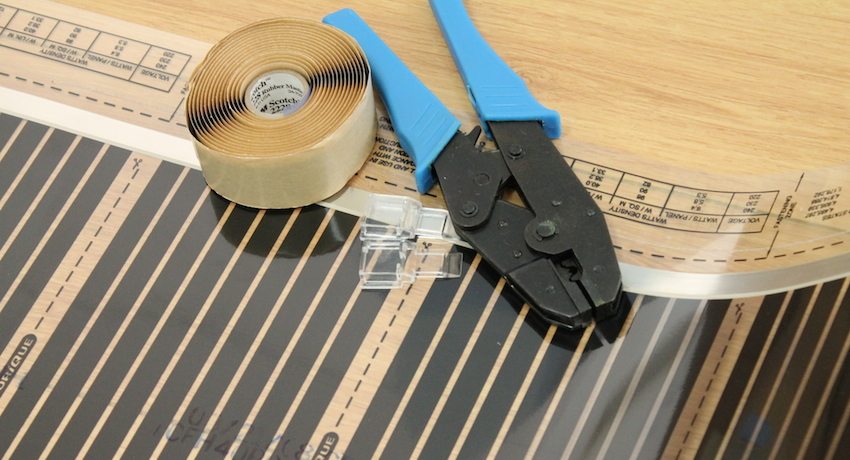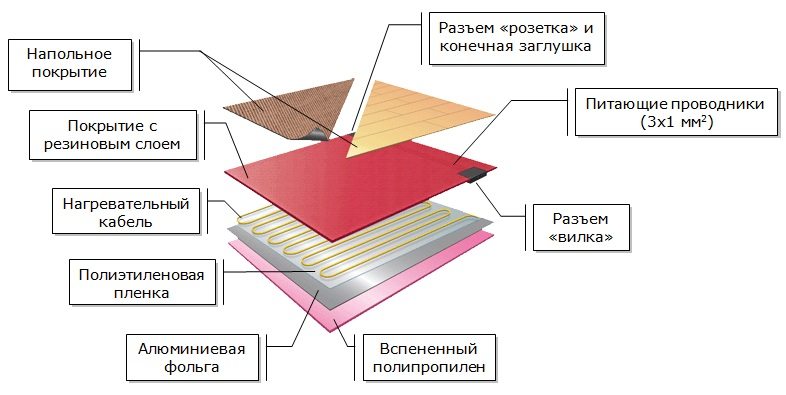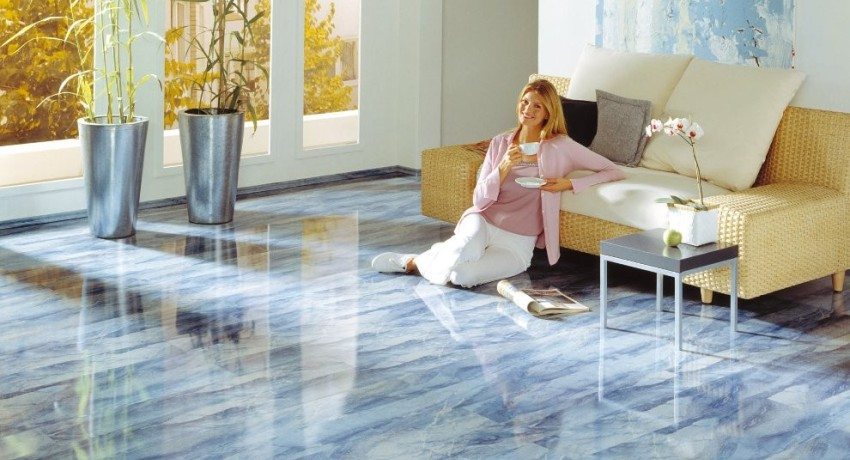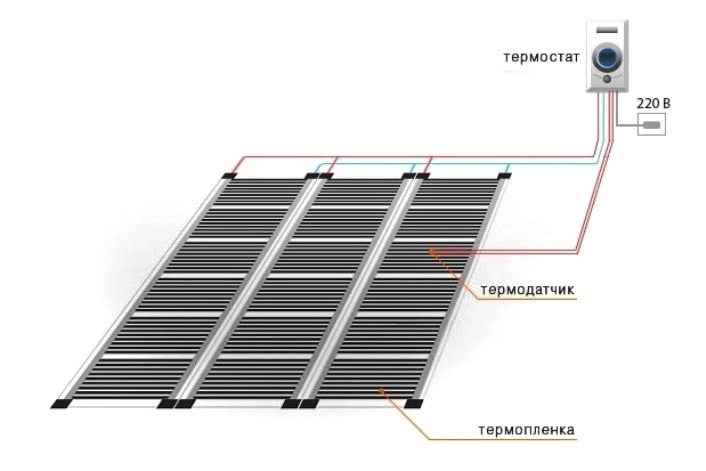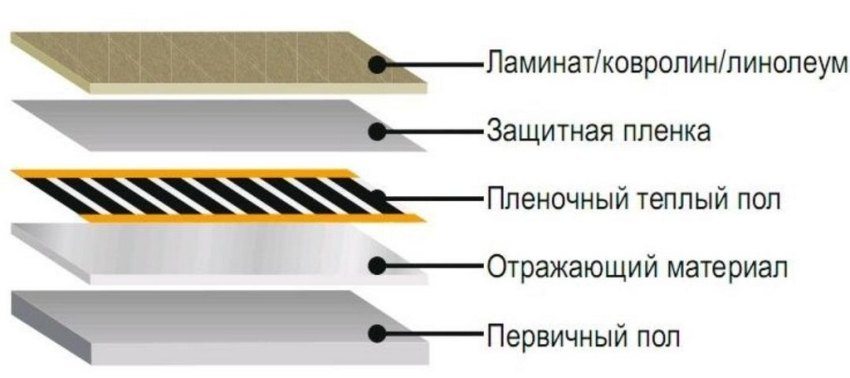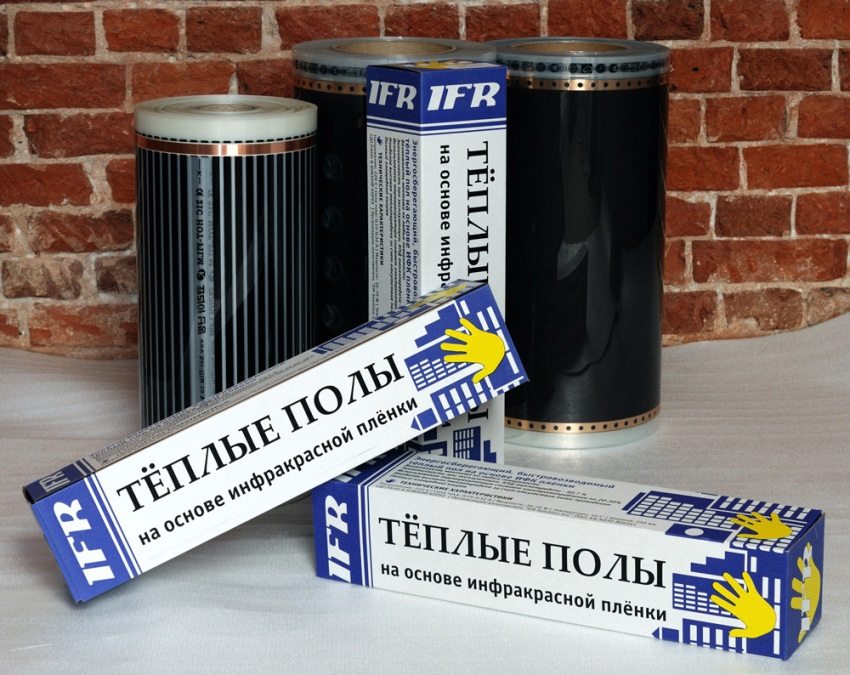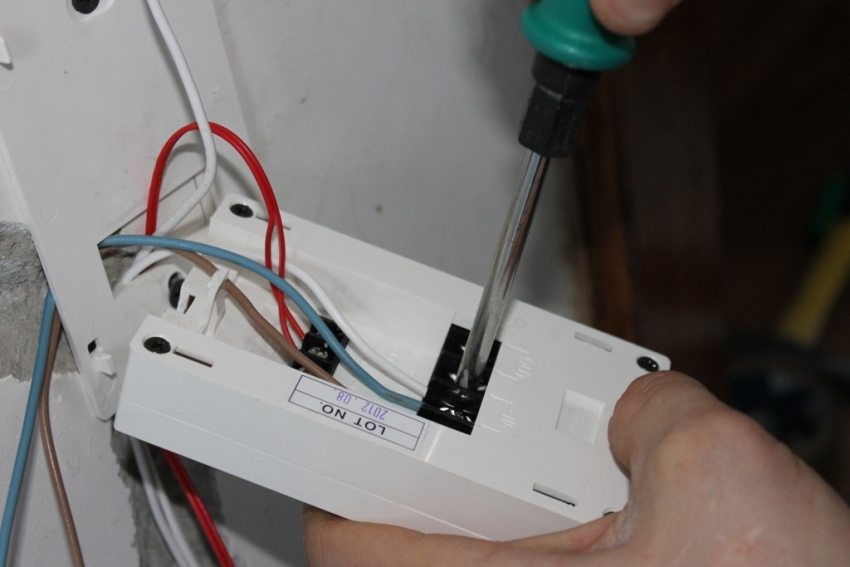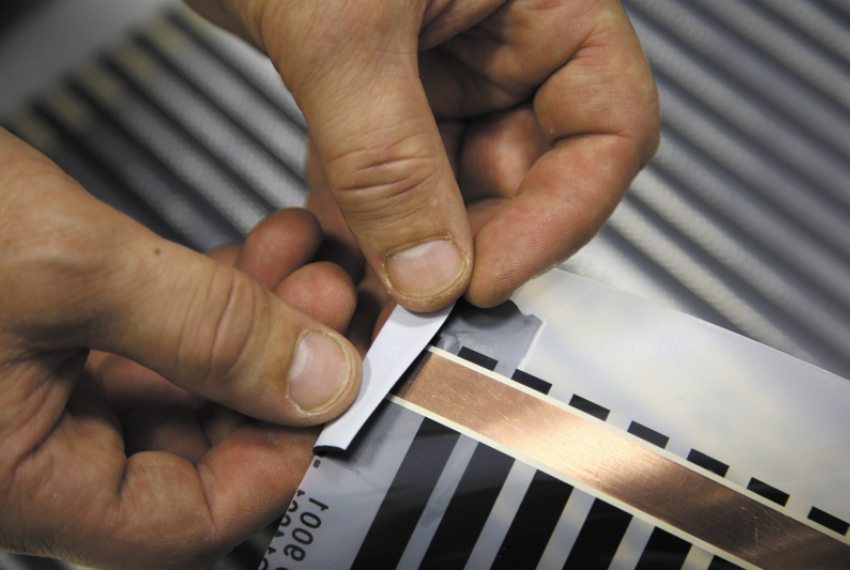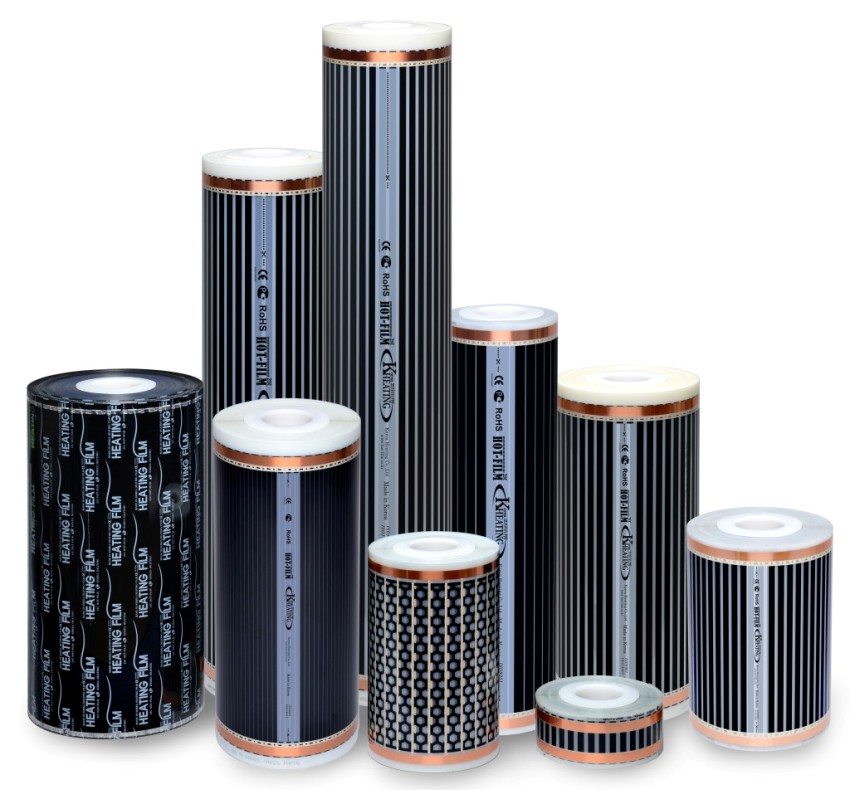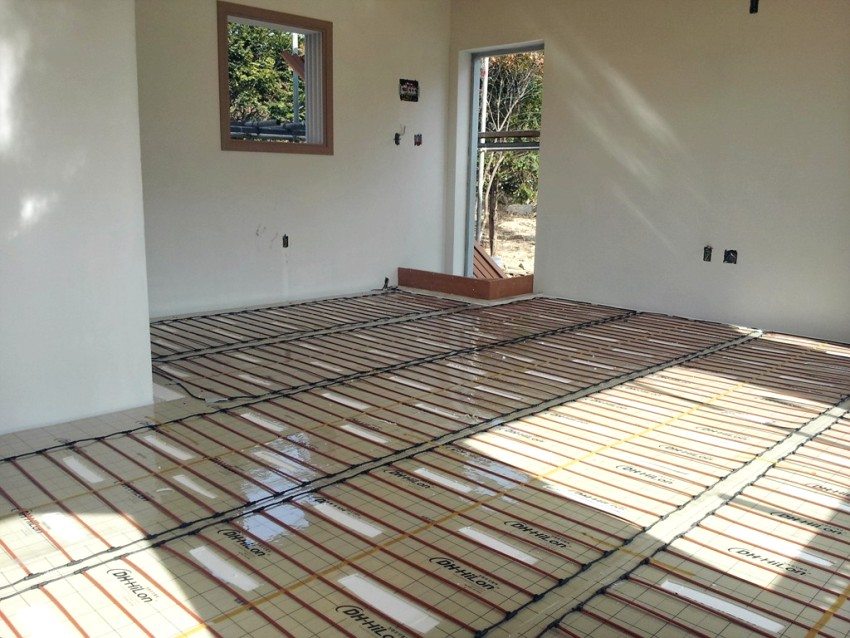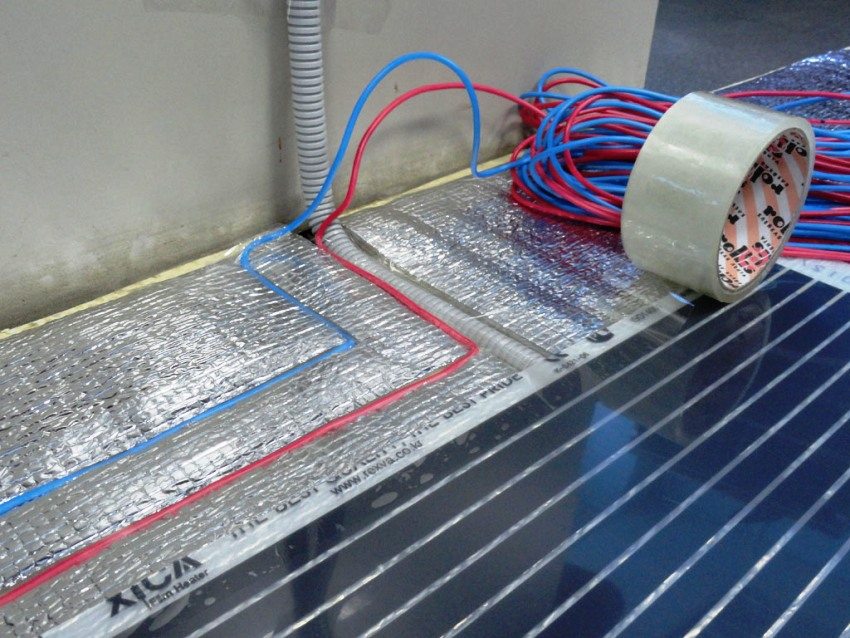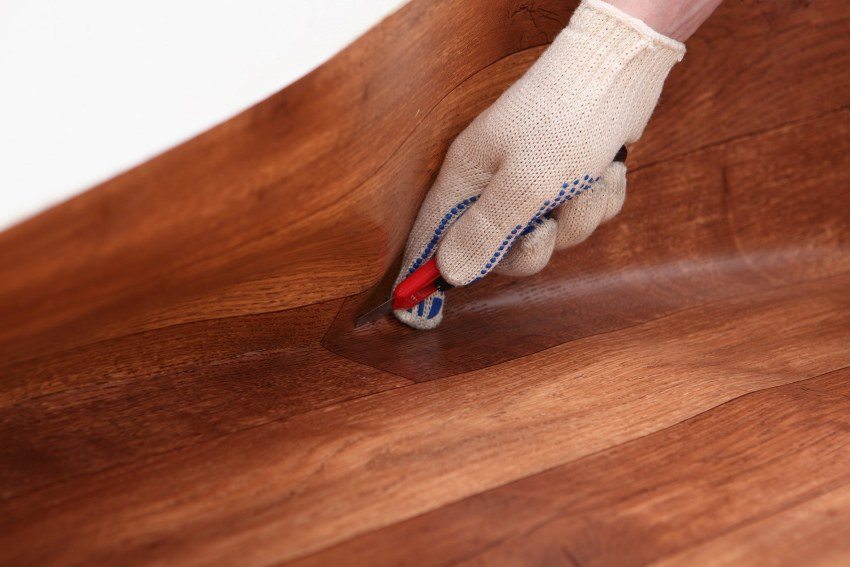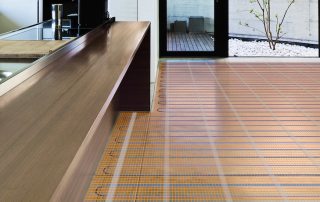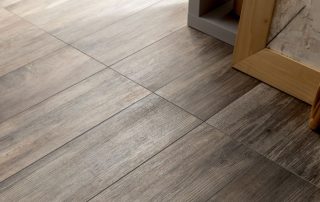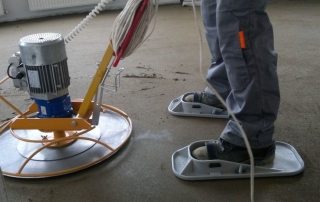In order to always have a warm floor under the linoleum, special heating elements of various types are installed on the wooden floor. The most suitable for this is the infrared floor under the linoleum. If you are planning to arrange underfloor heating in your apartment or private house, but do not want to remove wooden floorboards, then you need to familiarize yourself with some of the features of its installation.
Content [Hide]
What is the best way to make a warm floor under linoleum, on a wooden floor
The installation of an electric underfloor heating under linoleum must be taken with full responsibility. The fact is that this floor covering has a rather low thermal conductivity, which greatly reduces the heating effect. For this reason, you should choose types of linoleum with a thickness that provides sufficient transmission capacity for thermal radiation. At the same time, it should be understood that too thin a coating will poorly hide all the unevenness of the relief of the base of the floor. Especially if they put a warm floor under linoleum on wooden floor.
Moreover, any linoleum with strong heating, it is able to emit harmful volatile substances, which prevents the use of special cables as heating elements. The temperature at which the device acts on the surface linoleum should not exceed 30 degrees. In this regard, for the installation of a heated floor, on which it is planned to lay linoleum, it is best to use a heating film with infrared elements. It does not heat up to high temperatures, but it gives off enough heat to create the effect of a warm floor under the linoleum. Reviews about her are mostly positive. In addition, such a device consumes much less electricity.
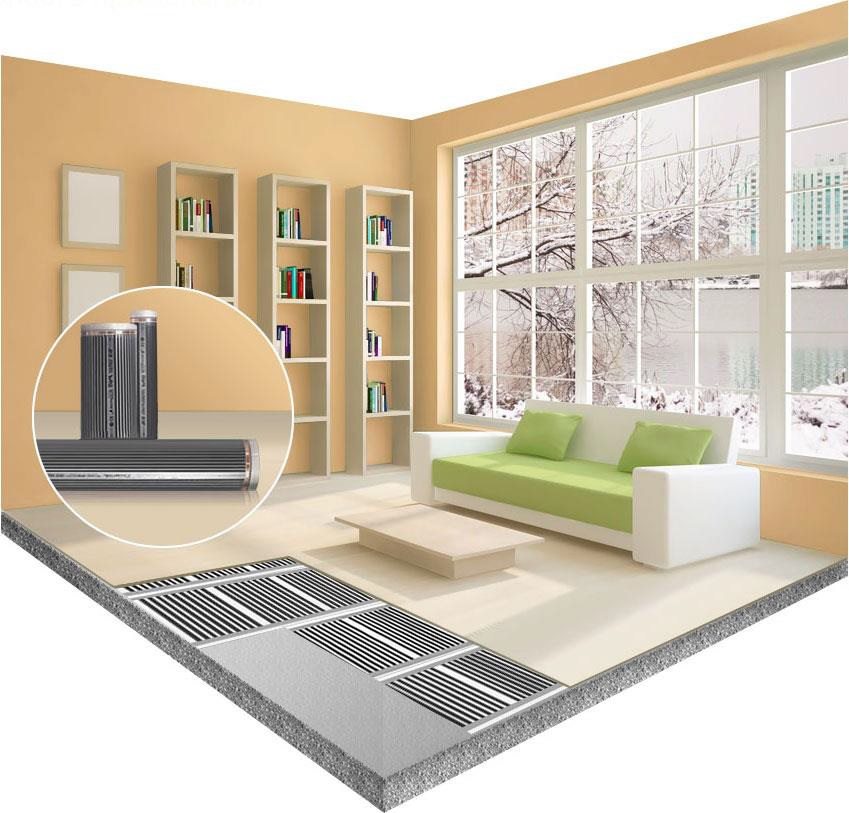
Electric infrared warm floor in the living room
Linoleum is a highly elastic material. This makes it necessary to approach the choice of the subfloor very carefully. The best base for linoleum is a concrete screed, as it can be leveled almost perfectly. The same qualities are possessed by Self-leveling floors... But what if the floor is wooden? If in a city apartment it can be dismantled and poured with concrete, then in a country house it is not so easy to do this. Sometimes you have to lay the flooring directly on the wood floor. In this case, it is somewhat more difficult to lay a warm floor under linoleum.
Film infrared floor for linoleum: features and benefits
Infrared floor under linoleum is a film that is wound into rolls. Infrared elements are mounted inside the film, which, when connected to an electric current, emit infrared rays. They are not visible to the human eye, but are felt by the skin as warmth. In this case, strong heating does not occur. Infrared rays are able to heat surrounding objects, including linoleum, which itself will give off heat to the environment, filling the room with it.
This type warm floor has significant advantages to choose for installation on a wooden floor:
- it is very simple and easy to install;
- due to the lack of strong heating, it has increased fire safety;
- suitable for installation under any type of linoleum;
- has a small thickness (3 mm substrate + 0.4 mm film coating);
- the film coating is very durable with copper electrodes and carbon emitters located perpendicular to each other. The whole structure is laminated with a polymer film. The elements cannot be damaged during installation.
Helpful advice! Infrared floors have a maximum output of 220 W / m², which is too much for linoleum. Therefore, you need to buy those that issue no more than 150 W / m². If you purchased a more powerful warm electric floor for linoleum, the floor can become very hot. To limit the power, you need to set the thermostat for heating no higher than 30 ° C.
How to lay linoleum on a wooden floor using infrared elements
Let's consider in detail how to lay linoleum on the wooden floor on which we want to arrange heating. For this work we need:
- rolled infrared floor in the amount necessary to cover the area that we want to insulate;
- for each strip of film, it is necessary to prepare two clips - these are the clamps with which the contacts are attached;
- to each room one by one thermostat;
- material with a high coefficient of heat reflection. Isolon covered with a dielectric film is suitable;
- polyethylene film;
- copper electric wire;
- double-sided adhesive tape.
In addition, a knife, furniture stapler, adhesive and insulating mastic are useful. To lay a warm floor under the linoleum, an isolon is placed on the wooden floor, the reflecting surface up. It is spread over the entire area of the room and attached with a furniture stapler. The joints between the sheets are sealed with tape. Infrared film unwind along the surface of the isolon so that the copper strip is at the bottom. If it is required to cut off the film, then this is done between the sections so as not to damage the graphite strips.
Helpful advice! Do not put thermal film on places where heavy furniture will be. At a distance of 50 cm from the walls, it is also not needed. This measure will significantly save on material.
If the insulating film is accidentally damaged during work, then it must be glued with mastic. After that, on one of the sides of each strip of the film, copper electrodes are isolated with bitumen mastic. The other sides of the strips are connected in parallel using clamps. The first contact of each clamp is placed inside the film on the electrode surface, and the second on top of it. The clamp is compressed with the electrode using pliersensuring reliability and durability of contact.
Then all strips of warm electric floor under linoleum are fastened with tape to each other. The ends of electrical wires stripped from insulation are inserted into the clamps. Squeeze them with pliers, and then insulate the place of contact between the clamp and the thermal film along with the stripped part of the wire.Silver contacts running along the edge of the strip completely insulate.
Installing a thermostat for infrared floor
A thermal sensor is glued to any of the strips using mastic. It attaches to a carbon fiber thermocouple. The wire from it is taken out to the nearest wall. In the place where the temperature sensor is attached, as well as where the wires pass, grooves and recesses are cut out in the isolon. This is necessary in order to linoleum then it was even, so that there were no bumps on it. The thermostat is attached to the wall and electrical wires are connected to it according to the instructions.
In order for the electrical protection to be effective, a separate automatic machine is used for a system with a power higher than 2 kW. The thermostat value is set at 30 ° C. Having connected the system to the network, they check the functionality of each strip by touch. Then diagonally glue tape covered with foil and attach one end of it to the wire grounding.
To reliably arrange a warm floor under the linoleum, polyethylene is laid on the wooden floor over the thermal film, on which plywood is attached with self-tapping screws or OSB sheets... This must be done very carefully, as there is a possibility of damage to the electrodes.
Laying linoleum
When the performance of the underfloor heating has been fully tested, and all layers are leveled, you can start laying the coating itself. Everyone knows how to lay linoleum on a wooden floor, but it should be borne in mind that before laying it you need to spread it around the room and turn on the underfloor heating system. This will heat the material, which will expand and flatten freely.
Helpful advice! Before the final fixing of linoleum on the floor, it should be left uncoiled for one day. This will allow him to lie down and level.
When everything is ready, the linoleum must be cut into strips of the required length and laid on the floor throughout the room. The edges of the linoleum are fixed skirting boards... Where electrical wires exit in skirting board cut a small hole. Some types of material require a sticker. Special mastic is used as an adhesive. It is applied to plywood with a thin layer, after which the linoleum is glued, rolling it over a flat and sticky surface.
Warm floors under linoleum, reviews of which are most often positive, are not at all difficult to lay on your own. You just need to correctly follow the recommendations and do everything carefully and efficiently.
